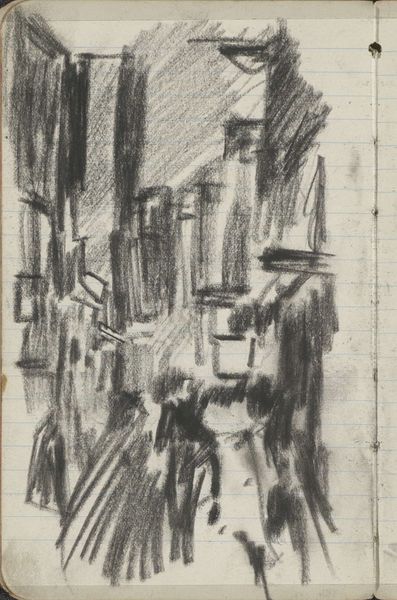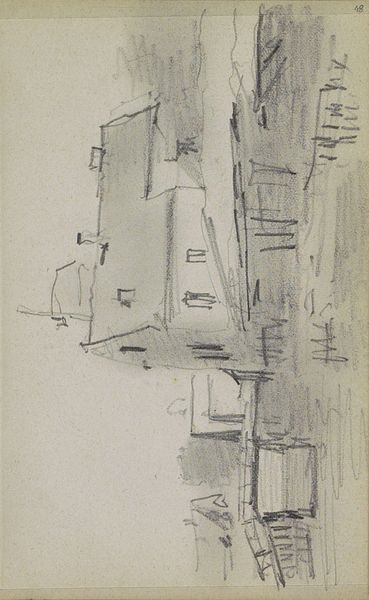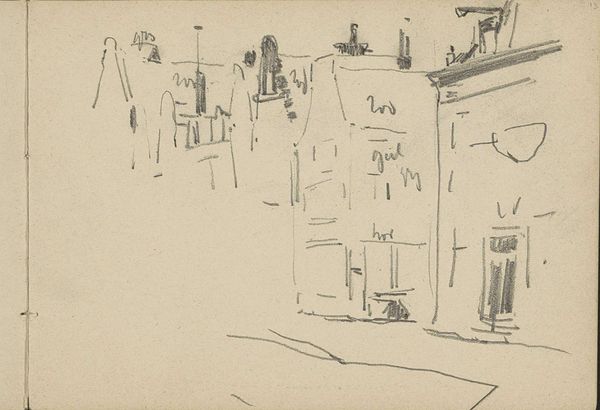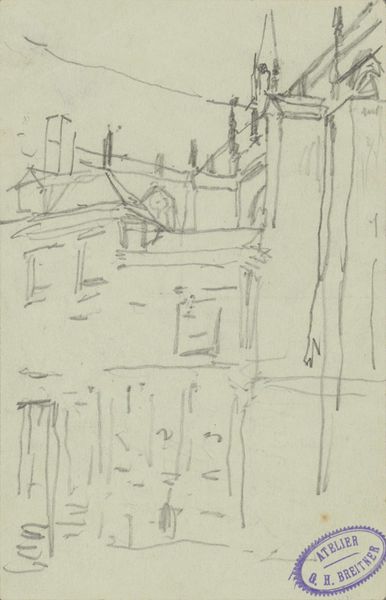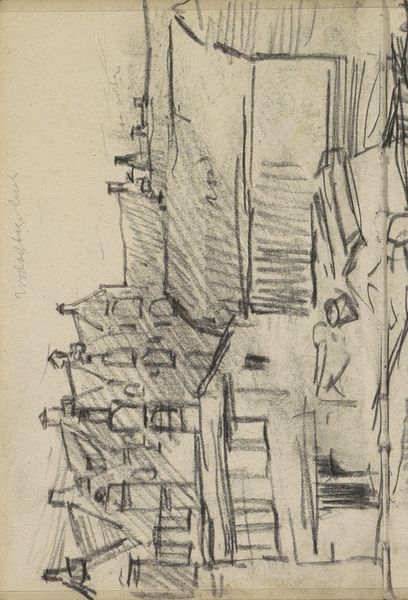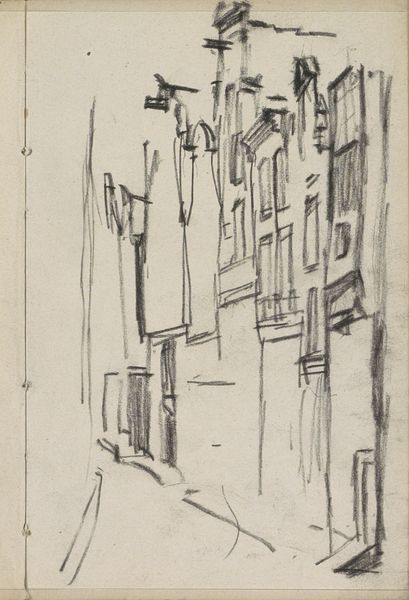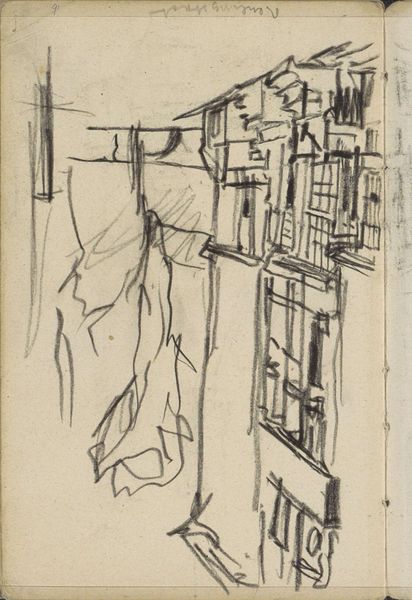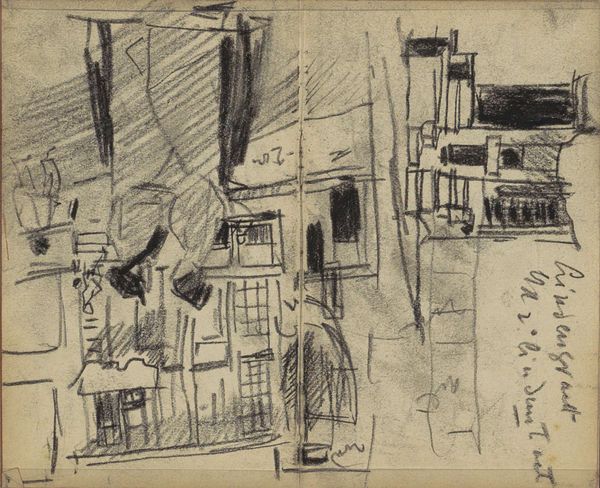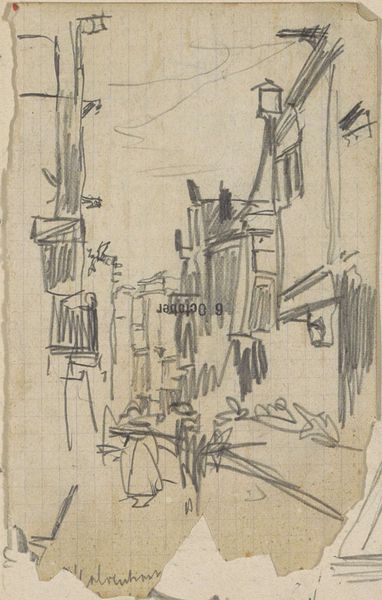
drawing, pencil, graphite
#
drawing
#
street-art
#
dutch-golden-age
#
impressionism
#
figuration
#
pencil
#
graphite
#
cityscape
#
realism
Dimensions: height 196 mm, width 117 mm
Copyright: Rijks Museum: Open Domain
Curator: Welcome. We're standing before "Figure in an Alley," a graphite and pencil drawing created in 1882 by George Hendrik Breitner, currently held in the Rijksmuseum. Editor: It has a certain… melancholy to it, doesn’t it? The stark lines, the muted tones, the lone figure—a definite sense of isolation pervades the composition. Curator: Absolutely. Breitner was deeply interested in representing modern urban life and the social realities of the working class, something evident in his choice of subject here. His production was part of a broader exploration of depicting labor and its physical toll within the context of rapid industrialization. Editor: And you can certainly feel the city's weight in those heavy shadows. Graphically, I'm struck by how Breitner uses hatching and cross-hatching to create a remarkable depth on paper, particularly in conveying the rough textures of the alley walls. Notice how light struggles to penetrate the narrow space. Curator: Yes, Breitner uses these stark contrasts to depict not just light, but also the socioeconomic contrasts that defined Amsterdam at the time. He captured everyday laborers but was considered among the 'Tachtigers,' focused on evoking moods and emotions. He used photography extensively, in ways that were often unseen at the time, to provide snapshots for his painted works. Editor: Fascinating, so photography aided the drawing process we see here, feeding his observation! If we think about visual rhetoric, that stark isolation isn't accidental, it uses compositional devices to invite interpretation: the converging lines draw our eyes down the alley toward the obscured figure, heightening that sense of loneliness. It shows us something, but holds the details back to create a certain kind of experience in the eye of the viewer. Curator: I agree. The sketch offers a raw, immediate glimpse into a specific social context – the material reality of 19th-century Amsterdam. Editor: Well, for me, the emotional truth of that moment is undeniably captured. A somber image—one I am glad to have paused with, though. Curator: Indeed. It invites contemplation about those who are often unseen, their contributions, and the city they shaped.
Comments
No comments
Be the first to comment and join the conversation on the ultimate creative platform.
